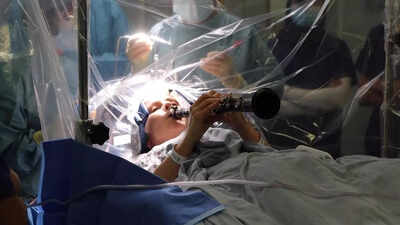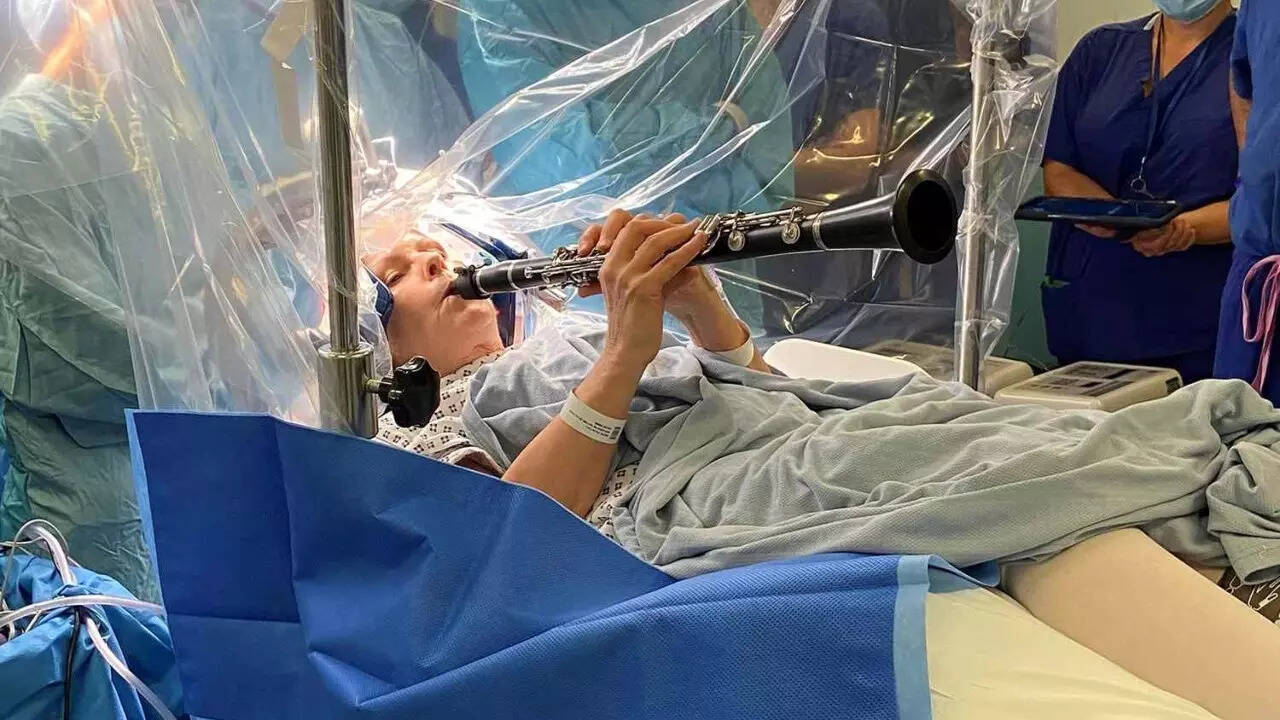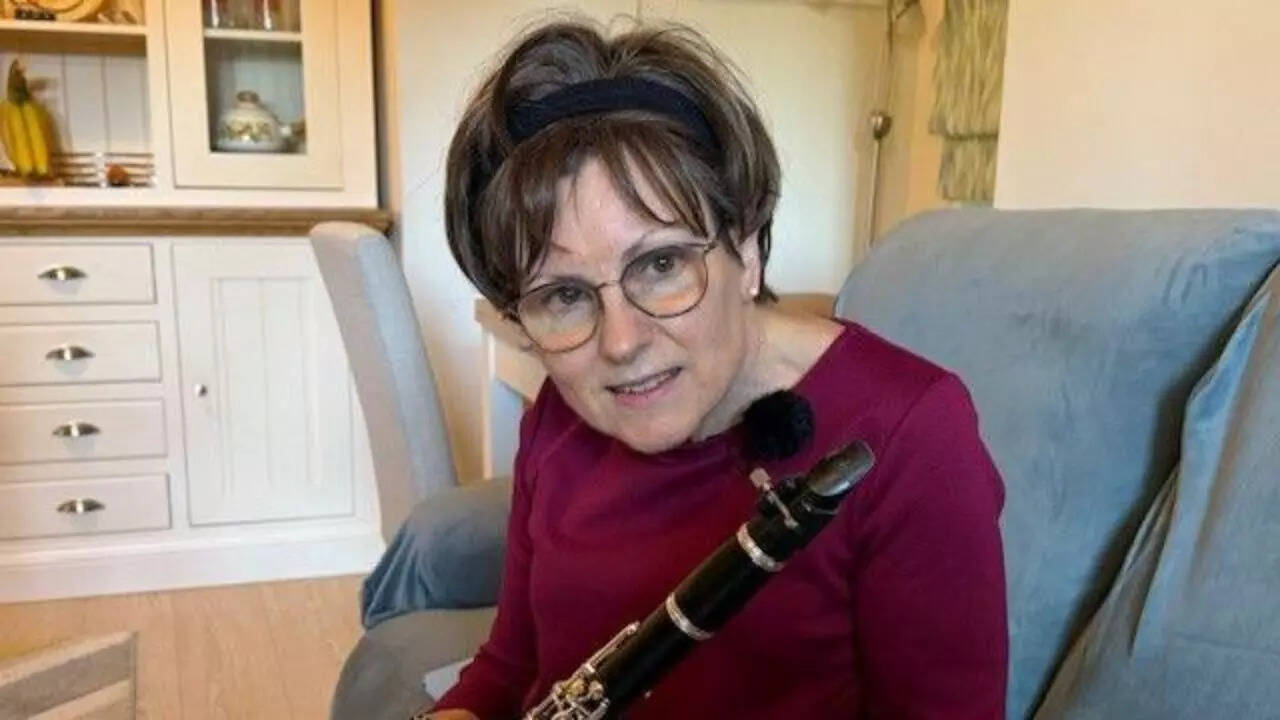ARTICLE AD BOX

No, this is not an episode from House, MD.This is very much a real scenario – and one, that might question your definition of ‘miraculous’.In a remarkable blend of medical advances and music, a 65-year-old British woman has become thge epitome of ‘extraordinary’ – emerging from the clutch of Parkinson’s disease, while playing her clarinet mid-surgery!Intrigued much?Read on to know what reall happened.
What happened
At King’s College Hospital, a four-hour deep brain stimulation (DBS) surgery, [performed earlier this year, has become the stage for something seldom seen.Denise Bacon, a 65-year-old woman, living in the UK, had lost much of her ability to enjoy what she loved – thanks to Parkinson’s disease. Bacon, who was diagnosed with Parkinson’s in 2014, had her mobility significantly impaired and that prevented her from performing even the most basic activities – be it walking, swimming, dancing – and above all, playing her clarinet.Now, at King’s College Hospital in London, Bacon underwent an awake procedure of Deep Brain Stimulation (DBS), during which she picked up her clarinet in the operating theatre and played as electrodes were implanted.

Sounds surreal, right?But the very moment provided immediate, audible feedback for surgeons and a symbolic triumph for Bacon!
Music in the middle of a surgery
The DBS surgery involved implanting electrodes deep into Baon’s brain, connected to a pulse-generator device (akin to a pacemaker) in her chest.
Under the direction of neurosurgeon, Professor Keyoumars Ashkan, she underwent the procedure while being wide awake – her scalp and skull numbed though her brain remained receptive to feedback. The surgical team invited her to bring her clarinet into the operating theatre so that, as stimulation was applied, her ability to play could be observed in real time.And as the surgery was halfway through, the miracle happened!As each electrode went live, Bacon’s finger movements improved – almost immediately. The first electrode placed on the right side of her brain yielded more fluid movement on her left side. Once the second electrode was implanted, movement on the other side responded too. Within minutes she was able to play the clarinet again – which not only became an audible confirmation of the procedure’s success, but also stood as an incredibly remarkable moment in the history of medical advancement!Think neurogical intervention yielding audible and visual confirmation – immediately – all wrapped in a rare yet tangible outcome!

The sound of music
Parkinson's disease is a progressive neurological disorder that primarily affects movement.
It is characterized by the degeneration of nerve cells in the brain, specifically those producing dopamine, a neurotransmitter crucial for coordinating movement. This leads to a range of symptoms, including tremors, stiffness, and slowness of movement. While there is no cure, treatments and therapies can help manage symptoms and improve quality of life.Now, DBS is not a cure for Parkinson’s, as it does not halt the neurodegenerative process.
However, DBS can significantly improve motor symptoms like tremor, rigidity and slowness of movement, especially when medications stop working optimally.After the surgery, Bacon was discharged and her chest-implanted stimulator was switched on. The device is rechargeable and able to automatically adjust stimulation levels, and it can last up to 20 years before needing replacement.Since the surgery, Denise has reported mobility improvements and she now nurtures a renewed hope of returning to perform her favorite activities. As of now, her next steps include intensive physiotherapy and occupational support to build momentum from the instant improvements she experienced. She plans to return to playing in her concert band, get back into the swimming pool and even hit the dance floor once again.

 4 hours ago
5
4 hours ago
5









 English (US) ·
English (US) ·